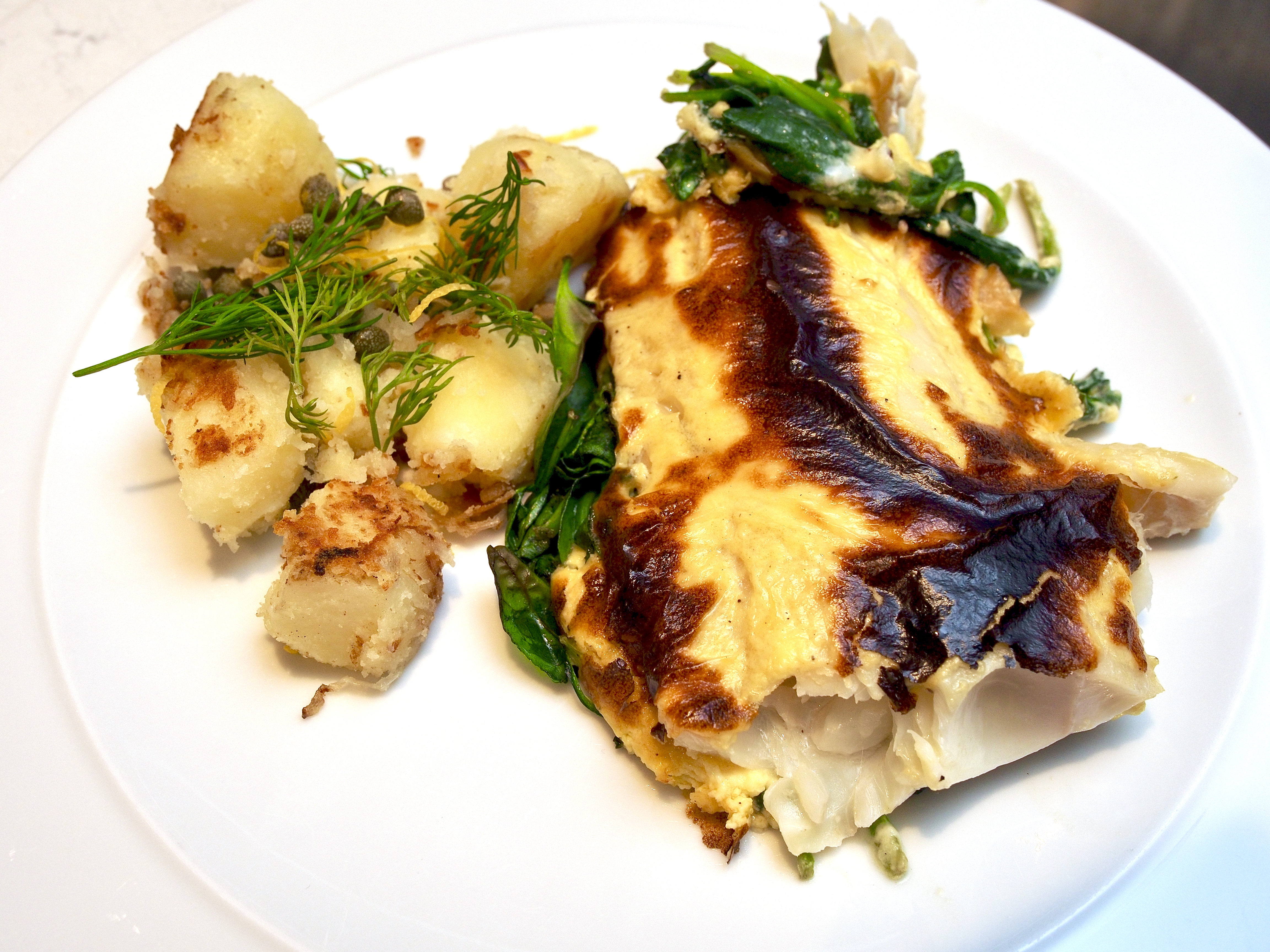
These are definitely a bit fancier than your average fishcake. Jam-packed with fish, not too much potato, and a stunning sauce. We’ve put a few in the freezer and can’t wait to have them again. The recipe is by Tommy Banks, of The Black Swan in Oldstead, and he suggests serving a poached egg on top. Do as you wish.
Wine Suggestion: We actually had another Jura Chardonnay with this, the Berthet-Bondet, but we’re conscious that these aren’t easy to find. We’d also suggest a sparkling from a cooler climate, especially if it has some autolytic bottle age; or a Chablis, Vermentino or good Albariño.
Luxury fishcakes with tartare velouté – serves 6
FOR THE FISHCAKES:
- 1 red-skinned potato, about 250g
- 250g smoked cod or smoked haddock
- 250g hake
- 2 bay leaves
- 1 tbsp English mustard
- 500ml milk
- 1 egg yolk
- 2 eggs, beaten
- 25g butter
- nutmeg, for grating
- ½ lemon, zested and juiced
- 100g mature cheddar, grated
- 100g mixed white and brown crabmeat
- 2 bunches of scallions, finely chopped
- 100g plain flour
- 100g panko breadcrumbs
- 4 tbsp sunflower oil, for frying
- poached eggs (optional), lemon wedges & pea shoots, to serve
FOR THE TARTARE VELOUTÉ:
- 25g butter
- 25g plain flour
- 50ml double cream
- squeeze of lemon
- large handful of parsley, chopped
- 2 tbsp capers, chopped
Prick the potato a few times, then bake at 200C/180C fan/Gas 6 for about an hour or until soft.
Scoop the flesh from the potato into a bowl and mash until smooth.
Meanwhile, put the cod or haddock and hake into a large, shallow pan. Add the bay leaves, mustard and milk, and season. Bring to a simmer over a high heat, then cover with a lid, turn off the heat, and leave for 10 minutes.
Put the mash into a large bowl and stir in the egg yolk, butter, a pinch of grated nutmeg, the lemon zest and juice, the cheese, the crab and the scallions. Stir together well, then add 1 tbsp of the poaching milk and some seasoning.
Lift the fish gently from the milk and pour the milk into a jug (throw away the bay leaves). Flake the fish into large pieces and stir gently through the potato mixture. Shape the mixture into 6 fishcakes.
Now put the flour, egg and panko crumbs into 3 separate bowls. Coat each fishcake lightly in flour first, then dip into the egg to cover and finally into the panko crumbs. You want them to be totally covered in the breadcrumbs. You can freeze them now if you like or put into the fridge for cooking later.
To make the sauce, heat the butter in a saucepan until foaming, then stir in the flour. Cook over a low heat for 2 minutes, then gradually add the reserved poaching liquid, stirring all the time. Keep adding liquid until you have a silky sauce, then stir in the cream and leave to simmer gently for 10 minutes. Stir in some lemon juice, parsley, capers and seasoning. Keep warm.
To cook the fishcakes, heat the oil in a large non-stick frying pan and cook for 4-5 minutes on each side until dark golden and crispy. A metal skewer into the centre helps to check they’re piping hot, particularly if they’ve spent time in the fridge. You can cook them in batches if easier and keep warm in a low oven.
Serve the fishcakes with plenty of sauce, a handful of pea shoots and a lemon wedge. You can also add a poached egg if you would like.
(Original recipe from BBC Good Food)
Read Full Post »




















